Environmentalists yesterday said 54 locations around the nation had radiation levels more than three times the permitted maximums and said the high levels in the study may have been caused by poor nuclear waste treatment.
Starting in March last year, documentary maker Lin Jui-chu (林瑞珠) gathered more than 50 volunteers to survey Taiwan’s radiation levels.
The volunteers used handheld digital radiation detectors to measure ionizing radiation at 733 sites and 1,959 detection spots across the nation. They made an effort to record data at elementary schools, parks, beaches and other frequented areas.
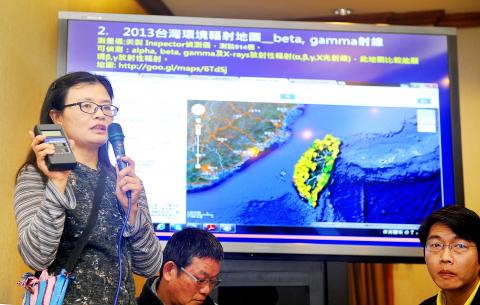
Photo: Liao Chen-huei, Taipei Times
Lin said she was inspired by a report produced by Tokyo-based Taiwanese writer and anti-nuclear advocate Liu Li-erh (劉黎兒) about her discovery that the radiation levels in many parts of Taipei were higher than some recorded in Tokyo after the Fukushima Dai-ichi nuclear accident in 2011.
Hsinchu Environmental Protection Association chairperson Chung Shu-chi (鍾淑姬) said: “Up to the end of last year, our survey results showed that the radiation levels detected at 54 of 44 sites were above 0.3 microsieverts per hour — about three times the allowable standard in Taiwan.”
Their data showed the highest radiation levels of 1.92 microsieverts, 1.42 microsieverts and 0.928 microsieverts, were all detected at National Tsing Hua University.
Green Formosa Front standing director Lin Chang-mao (林長茂) said that because radiation exposure may cause the most harm to organs in adults — especially women’s reproductive organs — and children’s heads, they conducted their measurements at 1m above ground level.
Lin said they had doubts about the 24-hour radiation levels reported by the Atomic Energy Council’s 45 monitoring stations across the nation because the council’s detection equipment is enclosed in steel boxes, and the levels detected at Lanyu (蘭嶼) — where a temporary nuclear waste storage facility is located — were often the lowest among all the stations.
The volunteer group said they suspected the average radiation levels detected across the nation were the result of poor nuclear waste treatment, especially at Taiwan Power Co’s volume reduction center for compressing and incinerating low-level radioactive waste.
Nuclear expert He Li-wei (賀立維), an Yilan Charlie Chen Foundation consultant, said based on the law of conservation of mass, the decontamination of radioactive substances does not completely destroy the radiation, so burning nuclear waste may cause radiation to spread into the air and water.
They urged the council to explain how it will deal with the radiation levels.
In response, the council said the detected levels may have been affected by background radiation levels or improper use of the detectors and that it was willing to conduct a survey along with the civic groups to clarify the measurements.
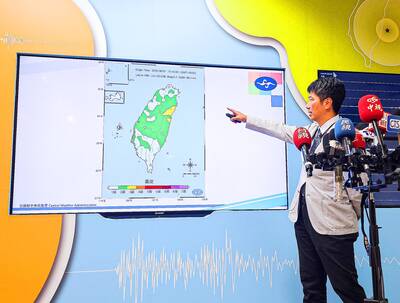
Aftershocks from a magnitude 6.2 earthquake that struck off Yilan County at 3:45pm yesterday could reach a magnitude of 5 to 5.5, the Central Weather Administration (CWA) said. Seismological Center technical officer Chiu Chun-ta (邱俊達) told a news conference that the epicenter of the temblor was more than 100km from Taiwan. Although predicted to measure between magnitude 5 and 5.5, the aftershocks would reach an intensity of 1 on Taiwan’s 7-tier scale, which gauges the actual effect of an earthquake, he said. The earthquake lasted longer in Taipei because the city is in a basin, he said. The quake’s epicenter was about 128.9km east-southeast
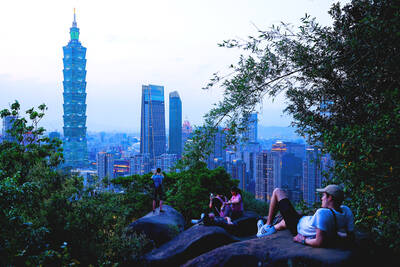
GENSLER SURVEY: ‘Economic infrastructure is not enough. A city needs to inspire pride, offer moments of joy and foster a sense of belonging,’ the company said Taipei was named the city with the “highest staying power” in the world by US-based design and architecture firm Gensler. The Taiwanese capital earned the top spot among 65 cities across six continents with 64 percent of Taipei respondents in a survey of 33,000 people saying they wanted to stay in the city. Rounding out the top five were Vietnam’s Ho Chi Minh City (61 percent), Singapore (59 percent), Sydney (58 percent) and Berlin (51 percent). Sixth to 10th place went to Monterrey, Mexico; Munich, Germany; Sao Paulo, Brazil; Vancouver; and Seoul. Cities in the US were ranked separately, with Minneapolis first at
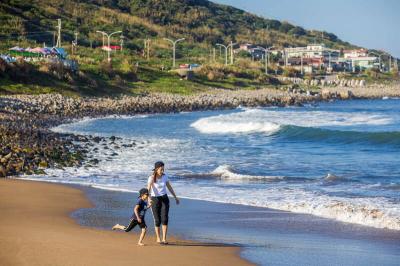
The New Taipei City Government today warned about the often-overlooked dangers of playing in water, and recommended safe swimming destinations to cool off from the summer heat. The following locations in the city as safe and fun for those looking to enjoy the water: Chienshuiwan (淺水灣), Baishawan (白沙灣), Jhongjiao Bay (中角灣), Fulong Beach Resort (福隆海水浴場) and Sansia District’s (三峽) Dabao River (大豹溪), New Taipei City Tourism and Travel Department Director-General Yang Tsung-min (楊宗珉) said. Outdoor bodies of water have variables outside of human control, such as changing currents, differing elevations and environmental hazards, all of which can lead to accidents, Yang said. Sudden
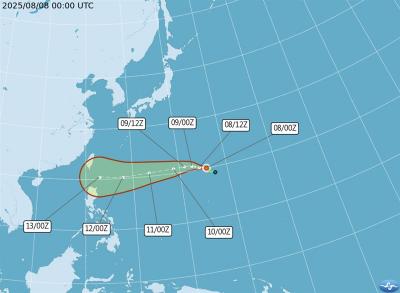
Tropical Storm Podul has formed over waters north-northeast of Guam and is expected to approach the seas southeast of Taiwan next week, the Central Weather Administration (CWA) said today. The 11th Pacific storm of the year developed at 2am over waters about 2,660km east of Oluanpi (歐鑾鼻), Pingtung County — Taiwan's southernmost tip. It is projected to move westward and could have its most significant impact on Taiwan on Wednesday and Thursday next week, the CWA said. The agency did not rule out the possibility of issuing a sea warning at that time. According to the CWA's latest update, Podul is drifting west-northwest